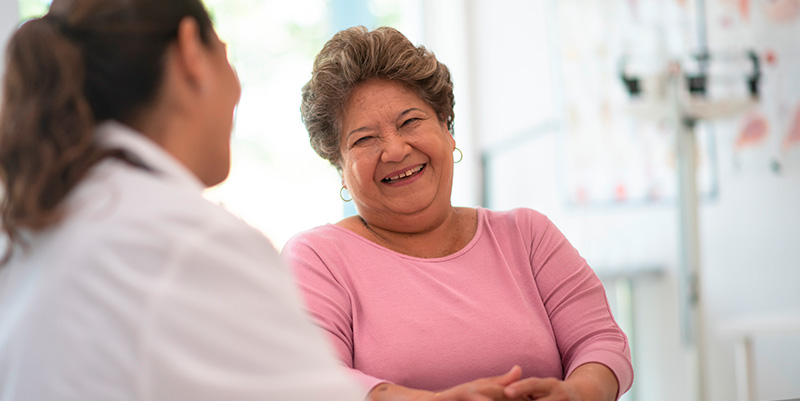Diabetes isn’t a one-size-fits-all disease. It will manifest differently even in two people with the same type of diabetes. One patient might experience blood sugar spikes from certain foods that don’t seem to affect another patient — even if factors like height, weight, and age are identical.
So, it makes sense that your diabetes treatment plan should be unique to you as well.
Many patients rely on trusted sources like the American Diabetes Association for guidance on their treatment plan. And while that’s a great start, it’s important to tailor your treatment plan to your own needs. Borrowing someone else’s care plan — no matter how well-designed — won’t account for your environment, socioeconomic status, medication schedule, comorbidities, allergies, or a whole slew of other factors specific to you.
What Can You Customize? The Three Pillars of a Care Plan
Think of your diabetes care plan like a three-legged stool. You have:
- Your lifestyle: Your diet and activity levels.
- Your therapies: The medication and tools (like a continuous glucose monitor, or CGM) you rely on.
- Your mental state: Your emotional well-being and stress levels.
Ideally, you’ll work on all three legs at once. You’ll eat right, exercise, monitor your glucose levels, take your medication as prescribed, and manage your stress.
But depending on your circumstances, all those tools might not be available to you. Maybe you have a condition like neuropathy that limits your ability to exercise. In that case, you can ramp up your focus on the other factors. You can adjust your diet and medication and focus on talk therapy or medication to help manage your stress. If the factors that make up one leg aren’t completely in your control, the other legs can help the stool stand up straight.
You’re the Bus Driver: The Importance of Tailored Therapy
It’s important to remember that your diabetes is yours. It’s not your cousin’s or your neighbor’s or even your care team’s. So, their tips and tricks on how to manage their diabetes may not work for you.
Imagine you’re sitting behind the wheel of a school bus. In the passenger seats are your care team, your educational resources (like the ADA), and other people with diabetes you know. They’re all offering helpful advice on how to navigate the path, but you’re the one with your foot on the gas pedal.
You’re the decision-maker.
But you’re also not alone.
Take advantage of your fellow bus passengers who want to help. If you receive a tip that you’re interested in trying, run it by your care team. They know your medical history and specific circumstances and can help you make managing your diabetes easier.
With a team of experts in your corner, you can separate good ideas (like taking more walks) from potentially dangerous ones (like rationing your medication).
Staying Motivated: Strive for Balance, Not Perfection
Once you understand the three-legged stool approach to diabetes care and have accepted your position as the bus driver of your care plan, it’s easier to find the motivation to successfully control your diabetes.
It’s not about perfection, but balance.
If you’re struggling in one area, you can always supplement with another leg of the stool. Can’t drum up the energy for a workout today? You might try eating lighter meals that won’t cause blood sugar spikes. Don’t want to give up sweets for a holiday? Rely on the expertise of your care team: They can adjust your insulin accordingly and recommend ways to avoid glucose spikes.
Wearing a CGM makes it easier for you and your care team to instantly see your blood glucose levels and adjust your diet or behavior accordingly, so you know what works to get your readings down … and what doesn’t.
The most important ingredient in your diabetes care plan is you. With the right strategies, knowledge, and support, you can create a treatment plan that works for you, instead of having to work for your treatment plan. Knowing which aspects of your treatment plan can be adjusted and having a knowledgeable care team on your side can make all the difference.
Ready to start the process of getting a CGM?
We’ve created a guide to help you select the right one for your lifestyle.
Start here:

Or just pick up the phone and chat with us. We’d love to hear from you.








